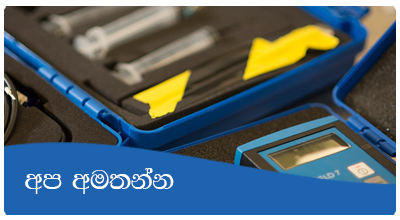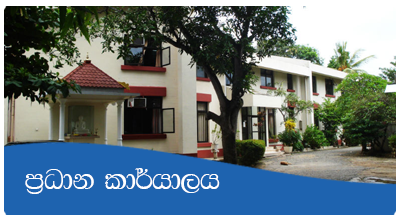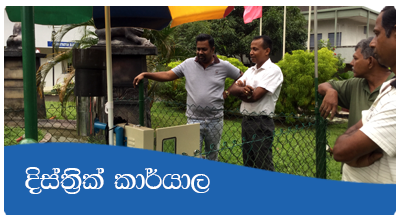Main Symposium at BMICH
The National Building Research Organization (NBRO), in collaboration with the International Consortium on Landslides (I.C.L.), has organized a symposium on the "Development of Early Warning Technology for Rapid and Long Traveling Landslides" (Project RRLL). Project RRLL is a five-year research project initiated in 2020 between I.C.L. and NBRO under the framework of the Science and Technology Research Partnership for Sustainable Development (SATREPS), a Japanese government program promoting international joint research.
The symposium was successfully held on the 25th of August, 2023, at the Jasmine Hall of BMICH premises. This significant event was filled with renowned experts from Japan and NBRO scientists in landslide research and early warning systems.
The inauguration session started with a remarkable speech by project leader NBRO, Eng. (Dr.) Asiri Karunawardene, Director General of NBRO. Afterwards, Ms. Yuri Ide, the senior Representative of the JICA Sri Lanka Office, addressed the audience. Further, Mr. Takashi Asaeda, Research Supervisor, SATREPS, J.S.T., delivered the prerecorded greeting message. Also, the greeting messages were delivered by Mr. Athula Karunanayake, Director General of the Department of Meteorology, and Mrs. Anoja Senevirathna, Director - Mitigation, Research & Development. Moreover, a brief introduction of the "Project RRLL" highlighting the achievements obtained so far was presented by the Project Leader, I.C.L., Prof. Kazuo Konagai, at the end of the symposium's first session.
The following three sessions mainly concentrated on the technical and social applications of the RRLL project and shared all the essential findings throughout their project RRLL Journey.
Five presentations in Session No. 2 were about the individual core technologies vital for the RRLL Early Warning, precise one-day-in-advance prediction of rains in the mountains, and RRLLs.
These presentations were then followed by a demonstration, in Session 3, of the Augmented Reality (A.R.) software that allows stakeholders an interactive experience that combines the real world (geographic information of pilot study sites) and computer-generated content (predicted rains and RRLLs). The other presentations in Session 3 were about activities to refine the developed technologies and questionnaire surveys whose results will help implement the developed Early warning System in local communities, D.S. divisions, D.O.M., and the other entities concerned.
Last but not least, presentations in Session 4 highlighted future tasks and things we should remember for sustainable and rational disaster prevention measures. They were about technology transfer and the increasing seismic activity witnessed on the island, which has never been in the World's earthquake-prone area.
After the informative discussions, Dr. Jayathissa, Project Manager and Director of LRRM Division NBRO delivered the final remark on the first day of the symposium and welcomed all the participants to the second day of the symposium at the main auditorium of the NBRO.
Mini-Symposium at NBRO
The second day of the symposium was the venue for young Sri Lankan scientists who have been studying hard in Japanese universities and those who have been working hard with Japanese experts with expertise in weather and RRLL forecasts, seismic monitoring, etc., all are vital for the RRLL Early Warning. The presentations of their proactive activities, comprising the heart of capacity building and sustainable technology transfer, are indeed what we can count on.
Highlights of Main Symposium





Highlights of Mini Symposium

































